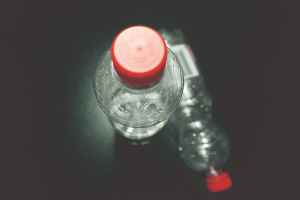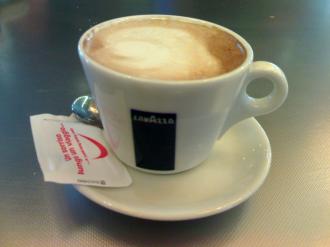Plastic in You
“Our oceans are rapidly turning into a plastic soup – awash with 14 billion tons of tiny, toxic particles that will never break down. And every day, more microplastics flow out of our drains into once-pristine rivers and seas.” (Eko)

There’s so much plastic in the sea they estimate that it will exceed the fish by 2050. Huge amounts are being used every day. Plastic pollution on land is even greater, including from farming. Fruits and vegetables are being grown under plastic sheeting or in plastic covered poly tunnels. Land is sprayed with sewage that includes micro-plastics from our laundry (see below).
A study looking at plastic microparticles in human waste (lovely job!) has found that on average there are 2 bits of plastic in every gram of faeces and each person had 9 of the 10 types tested for. There are indications that microplastic in the gut can cause inflammation and damage your gut bacteria. Plastics have even been found in placenta.
Where does all this come from? We buy it.
I noticed with dismay how much plastic packaging increased during lockdown. I now have to ask to have my meat in a thin bag because the standard has become the use of a plastic tray wrapped in cling film – hundreds of times more volume of plastic.
When most businesses were forced to close, the government supported junk by leaving the takeaways open. People have carried on this same pattern. Home deliveries used to be rare, now they are common. All come with masses of packaging. Ready meals are more commonly eaten than real food. And whatever it says on the label, never heat any plastic dishes, bags or containers in the microwave or oven.
Drinking from plastic bottles is another way plastic gets into your body and almost all bottled water is contaminated. A study, reported in Time magazine, found the worst to be Nestlé Pure Life at 10,390 particles per litre. The best in this test was San Pellegrino at 74 particles per litre. Here’s a 1¼ min video.
Then there are the coated paper single-use coffee cups that have become standard since lockdown too. If you haven’t time to sit and enjoy a drink in a cafe with proper crockery, invest in your own, non-plastic, reusable cup and take it with you when out and about.
Our council has changed the three small recycling boxes – one for plastic and metal, one for paper and another for glass – with a wheelie bin for plastic, glass and metal and another for paper and cardboard. I notice that lots of people’s bins are so full they can’t shut the lids.
Real food involves much less packaging, less plastic and generates much less waste.
Synthetic clothes are another major source, contributing a third of all the micro-plastics – from our washing machines. The government has looked at requiring manufacturers to fit them with filters which would probably help (France has made them compulsory for new machines). But this still doesn’t address the root cause which is that we will keep making things out of plastic.
(Here’s an old Guardian article.)
Measures to clean up the mess are well and good – but it would be better to make less mess in the first place.
I don’t know whether you buy second hand clothes made of natural materials, but you, my Eat Well Gang are helping resist this destructive plastic trend by eating real food. Keep up the good work!
Top tip: Keep down your plastic consumption.
Welcome to my website.
If it’s your first visit, head over to the Welcome page to find out what I’m about and for links to my top articles.
.
Eat Well News
To get my full Eat Well News, sign up here. It’s so much more than the blog posts I write. I’ll be in touch with you about nutrition and health, and to provide articles, and updates (eg research and campaigns relating to nutrition and health), and marketing (eg events, products, services, talks and courses), and recipes, and things to bring a smile.




